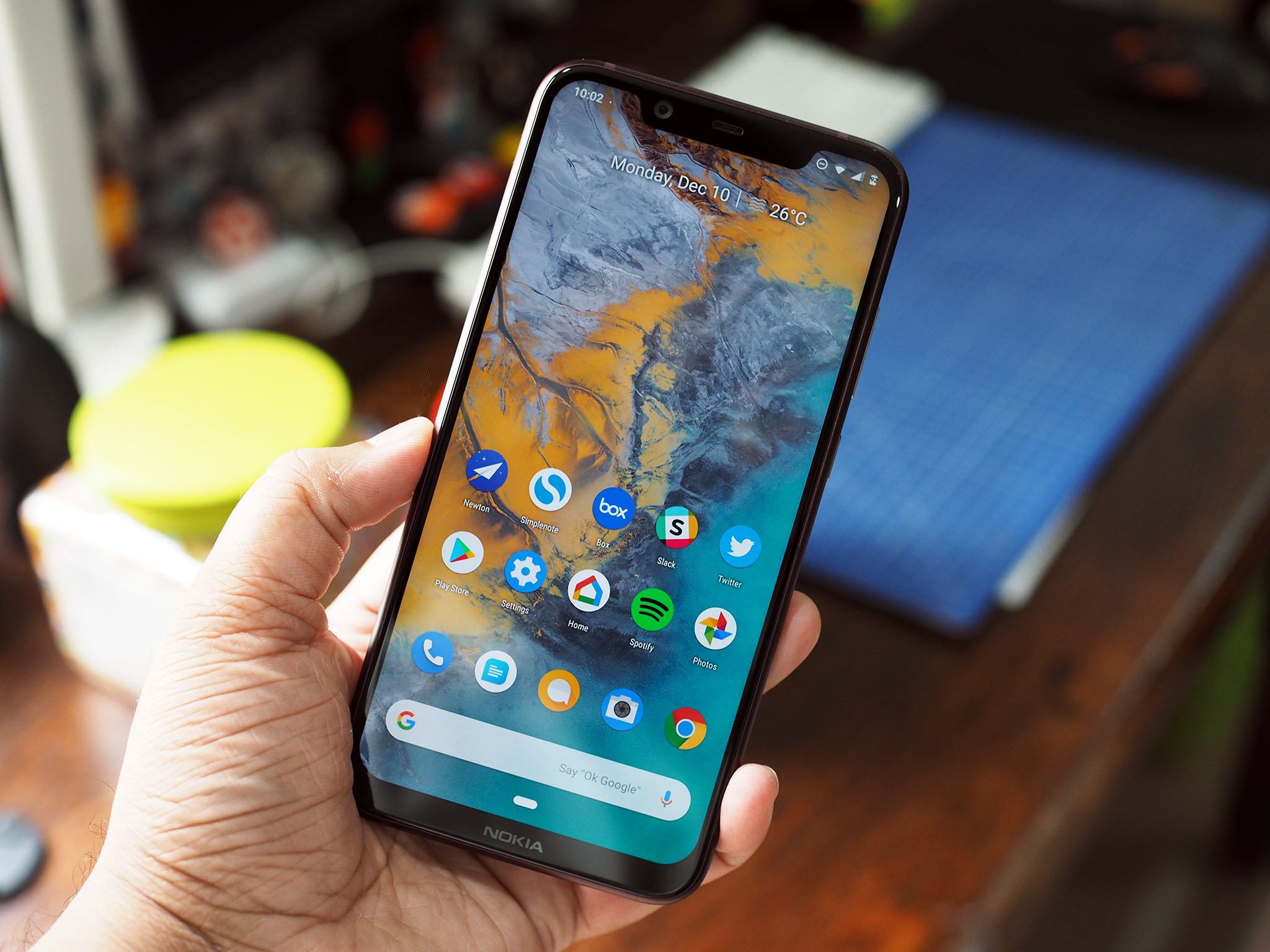When the Nokia 7 Plus debuted earlier this year, it became one of the best phones in the mid-range segment. That continues to be the case even now, but the Snapdragon 660 is getting a bit long in the tooth, and with devices that cost half as much offering the chipset, it's time for an update.
And that's what you're getting with the Nokia 8.1. The phone isn't an upgraded variant of the Nokia 8 as its name would suggest; it instead is a direct replacement for the outgoing Nokia 7 Plus, and by extension HMD Global's value flagship as we head into 2019.
The Nokia 8.1 retains a lot of the design traits that made the Nokia 7 Plus a success, and like the rest of HMD's portfolio, the device runs Android One out of the box. The phone does offer upgrades in key areas: the Snapdragon 710 chipset provides a significant boost in performance over the Snapdragon 660, the rear camera now has OIS, and the screen facilitates HDR10 content. With competition intensifying in this category, let's see if the Nokia 8.1 has what it takes to stand out.
Pros:
- Gorgeous design
- Excellent performance
- Improved cameras
- Android One
- Two-day battery life
Cons:
- Sizable notch
- No wireless charging
- No IP rating
About this review
I (Harish Jonnalagadda) am writing this review after using the Nokia 8.1 for ten days in Hyderabad, India. The phone was paired to Jio's 4G network, and was running Pie out of the box with the November 1, 2018 security patch. It didn't receive any updates over the course of the review period. HMD India provided the unit for review to Android Central.
Nokia 8.1 Design and hardware
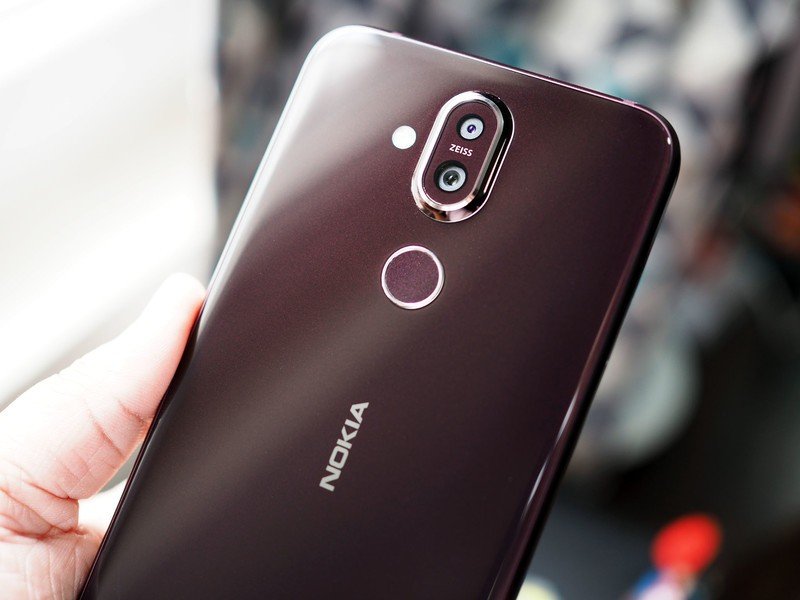
The Nokia 8.1 is a refinement of the design aesthetic that we first saw on the Nokia 7 Plus. Like its predecessor, the Nokia 8.1 is also milled out of a single chunk of series 6000 aluminum, and it has diamond cut edges and a sand-blasted finish. HMD retained the two-tone finish — with a chrome accent running along the sides of the frame on my unit — and it adds flair to an otherwise mainstream design.
A key change when it comes to design is the glass back, and as a result the phone loses out on the grippy texture that made the Nokia 7 Plus so good. HMD managed to cut down on the height by adopting a notch at the front, and that has allowed the brand to offer a larger 6.18-inch panel in a chassis that's shorter than the Nokia 7 Plus.
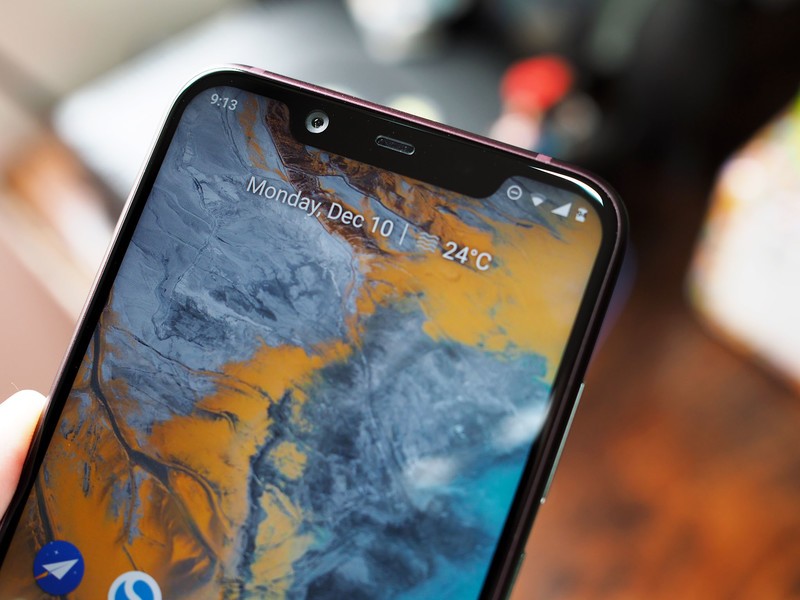
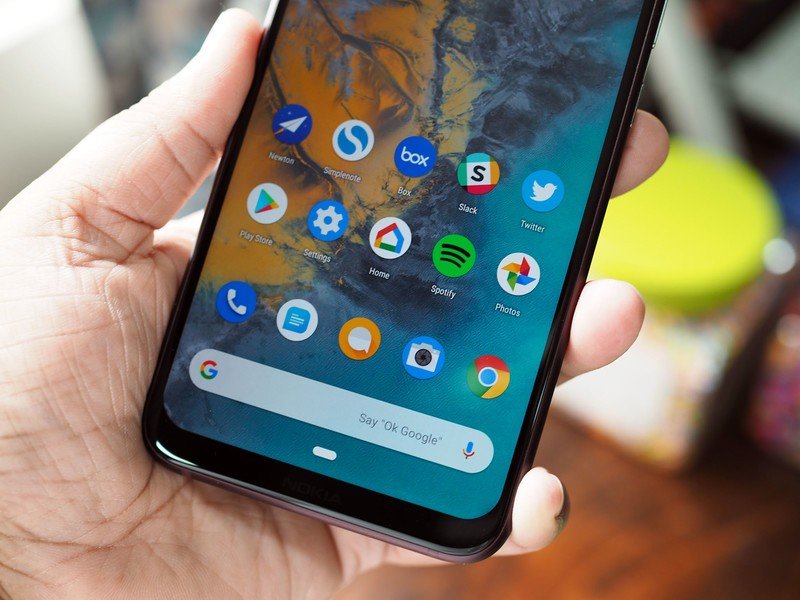
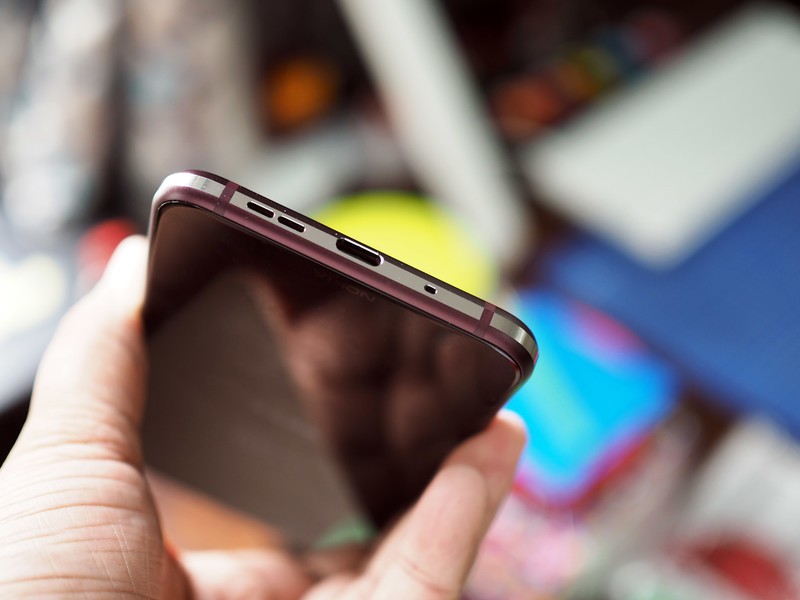
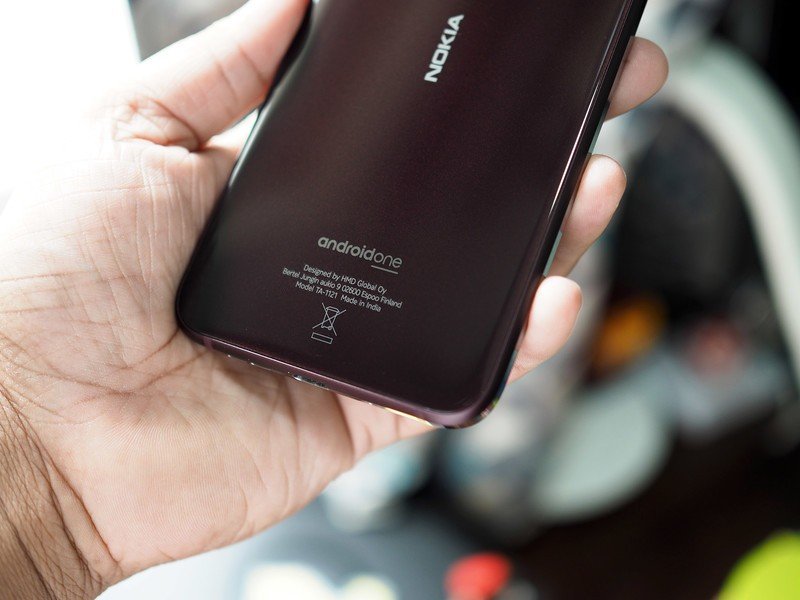
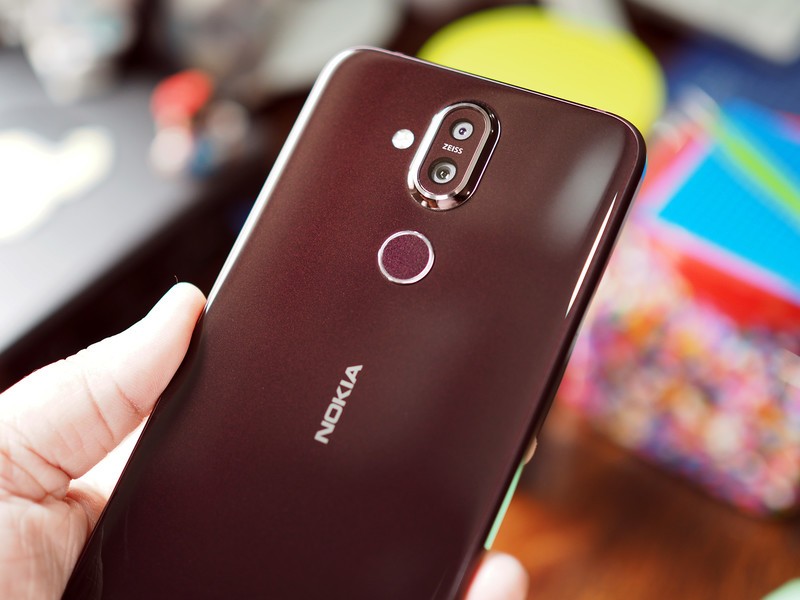
The Nokia 8.1 also comes in a new Iron/Steel color variant that looks gorgeous. The burgundy color shines through the glass back and is clearly visible around the sides, and the chrome accent contrasts the dark hue very well, with the phone looking every bit as premium as "true" flagships. The accent color extends around the mid-frame and the camera housing, as well as the Nokia logo.
With a two-tone finish comprising of burgundy and steel, the Nokia 8.1 looks gorgeous.
Even though it has a glass back, the Nokia 8.1 exudes a sense of durability. The device also has perfect weight distribution, and while it's missing the textured finish of its predecessor, it feels great to hold in-hand.
Power and volume buttons are located on the right, and they offer great tactile feedback. The fit and finish in general is top-notch, and you don't get the feeling that HMD compromised in terms of quality. The Nokia 8.1 also has a 3.5mm jack located up top, and a single speaker at the bottom.
HMD is extending its PureDisplay tech to the Nokia 8.1, with the phone just the second from the brand to offer the feature. You'll be able to adjust the color temperature and contrast levels to your liking, and it comes with a blue light filter and the ability to adjust brightness automatically based on ambient lighting.
The 6.18-inch has a resolution of 2280 x 1080, and the panel itself is one of the best you'll find on a sub-$400 phone. It offers vibrant colors and excellent contrast levels, and it is also compatible with HDR10 content. Color saturation isn't quite as good as an AMOLED display, but that is to be expected. The Nokia 8.1 gets sufficiently bright that using the screen under harsh sunlight wasn't an issue.
My only problem with the screen is that it isn't polarized; if you're wearing sunglasses, you won't be able to see anything on the display. This seems like an oversight from HMD's part considering budget phones offer polarized screens.
| Specs | Nokia 8.1 |
|---|---|
| Screen | 6.18-inch FHD+ (2280x1080) IPS LCD |
| Chipset | Snapdragon 710 |
| RAM | 4GB/6GB LPDDR3X |
| Storage | 64GB/128GB, MicroSD slot |
| Software | Android 9.0 Pie |
| Rear Camera 1 | 12MP, ƒ/1.8 |
| Rear Camera 2 | 13MP |
| Front Camera | 20MP, ƒ/2.0 |
| Security | Rear fingerprint |
| Battery | 3500mAh |
| Charging | USB-C (18W) |
| Connectivity | Wi-Fi 802.11 ac, BT5.0, FM radio |
| Colors | Blue/Silver, Iron/Steel |
| Dimensions | 154.8 x 75.7 x 7.9mm |
| Weight | 180g |
With the display supporting HDR10 content, HMD is positioning the Nokia 8.1 as a multimedia device. To that effect, the speaker at the bottom is one of the loudest I've seen on a phone to date. Although it is a single speaker, it doesn't get distorted at high volume, and there's even a little bass coming through. That said, a stereo speaker would have made the Nokia 8.1 an even better option.
The Nokia 8.1 is available with 4GB of RAM and 64GB of storage, and HMD is also selling a variant with 6GB of RAM and 128GB of storage. There's also a MicroSD slot that can take in cards up to 400GB, and you get the usual slate of connectivity options: Wi-Fi ac, Bluetooth 5.0, and AptX. As is the case with most HMD phones, you also get an FM radio tuner that lets you access local radio stations.
The fingerprint sensor at the back is just as reliable and fast as any other device in this segment, and I faced zero issues in this area. The sensor is located right where your index finger usually rests, so you'll be able to access the sensor without any hassle whatsoever.
Even though the battery on the Nokia 8.1 is lower than that of its predecessor, I got well over a day's worth of usage from the 3500mAh battery. With medium usage, you'll easily be able to eke out two days from a full charge. I averaged over five hours of screen-on-time spread out over the course of 16 hours, and the battery never fell under 30%.
Performance
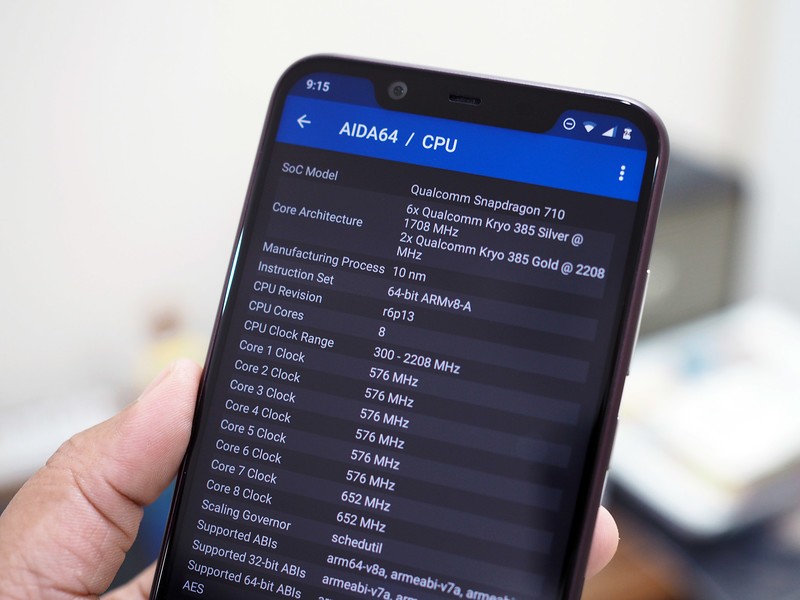
There was a time when Qualcomm's naming convention made sense: the Snapdragon 4xx and 6xx series was aimed at the budget and mid-range segments, and the 8xx series catered to the high-end market. With the Snapdragon 636 — and even the 660 — increasingly featured in devices costing as low as $250, Qualcomm came up with the Snapdragon 7xx series to cater to the mid-range segment.
The market is getting crowded in the $300 to $500 space, and Qualcomm is similarly adjusting to the needs of manufacturers by fleshing out its mid-range offerings. The Snapdragon 710 is particularly interesting as it offers a similar set of cores as the flagship Snapdragon 845 but at a lower price point.
The Snapdragon 660 was notable for making Qualcomm's semi-custom Kryo cores accessible to a wider audience, and the Snapdragon 710 continues in the same vein. Essentially, the chipset has two Kryo 360 high-performance cores based on the Cortex A75 that are clocked up to 2.2GHz, and six Kryo 360 cores based on the Cortex A55 that go up to 1.7GHz.
The Snapdragon 710 offers nearly the same level of performance as the Snapdragon 845.
The Snapdragon 710 leverages ARM's new DynamIQ heterogeneous architecture, which is an updated take on big.LITTLE that allows for more flexibility in multi-core designs. Think of the Snapdragon 710 as a lite variant of the Snapdragon 845 — it uses the same cores but at different frequencies, and it is built on the same 10nm LPP node.
The Snapdragon 710 also has the Adreno 616 GPU, which is the first time we're seeing the Adreno 6xx series being offered outside the high-end Snapdragon tier. The Adreno 616 is touted with a 35% increase in performance over the Adreno 512 in the Snapdragon 660, and Qualcomm is quoting a 20% increase from the Kryo 360 cores over the previous generation. Elsewhere, you get the same Hexagon 685 DSP as the Snapdragon 845, and the Spectra 250 ISP offers sizable gains in image processing.
The Nokia 8.1 Plus retails for the equivalent of $390 in India, or ₹10,000 ($145) less than the OnePlus 6T, and while the Snapdragon 710 isn't quite as fast as the Snapdragon 845, you won't notice the difference in day-to-day usage. Qualcomm has done a remarkable job with the mid-range chipset, and in most use cases the Snapdragon 710 is just as fluid as the 845. The only real difference shows up when you play demanding games like PUBG for an extended duration — the 845 is able to offer better sustained performance.
Nokia 8.1 Software
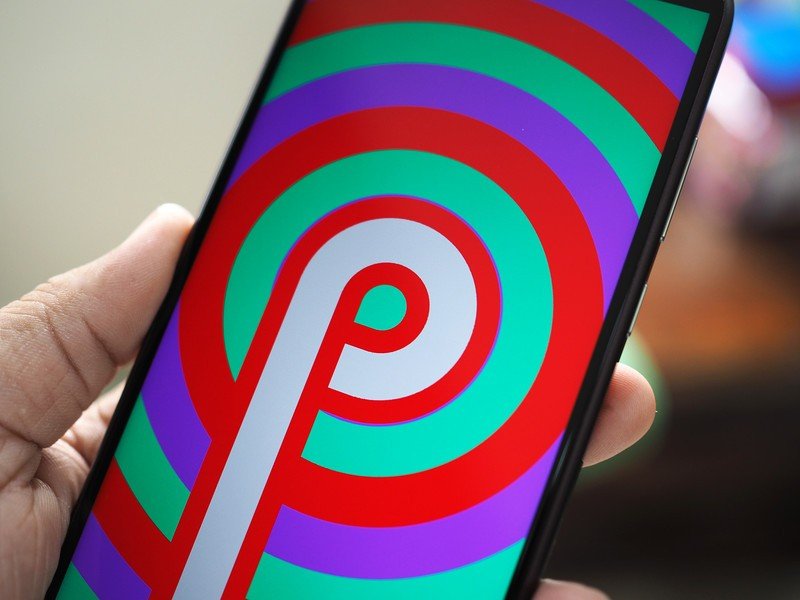
Like the rest of HMD's portfolio, the Nokia 8.1 is based on Android One. It is also the first HMD phone to run Android 9.0 Pie out of the box. As we've seen in the past, HMD has done a magnificent job ensuring it rolls out consistent updates to its portfolio of devices. Right now, it is one of very few vendors that consistently roll out updates on timely basis.
The software experience itself should be immediately familiar if you've used an Android One phone in the past. There's no bloatware, and all the new features that debuted with Pie are present. The key change on the interface front is navigation gestures — the Nokia 8.1 offers the new Pie-based gestures as the default option.
Android One ensures the Nokia 8.1 will be the first to receive updates.
You essentially swipe up from the bottom of the screen to access the overview pane, and there's a slider that lets you quickly toggle from one app to the next. A double swipe lets you access the app drawer, and the back button only shows up when needed. It takes a few days to get acclimated to the new gestures if you're coming from a device running Oreo or older.
New features like Digital Wellbeing and App Actions are available out of the box, and the former is particularly useful if you're looking to cut down on the amount of time you use your phone. There's also a system-wide dark theme, and a battery saver mode that learns from your usage patterns.
I had a few issues with Gboard after setting up the phone; but a reinstall fixed the problem. Aside from that, the Nokia 8.1 was a delight to use. As I mentioned above, the Snapdragon 710 feels just as fast and fluid in day-to-day use as the Snapdragon 845, and the Nokia 8.1 holds up to the likes of the OnePlus 6T and the POCO F1 in this regard.
Nokia 8.1 Camera
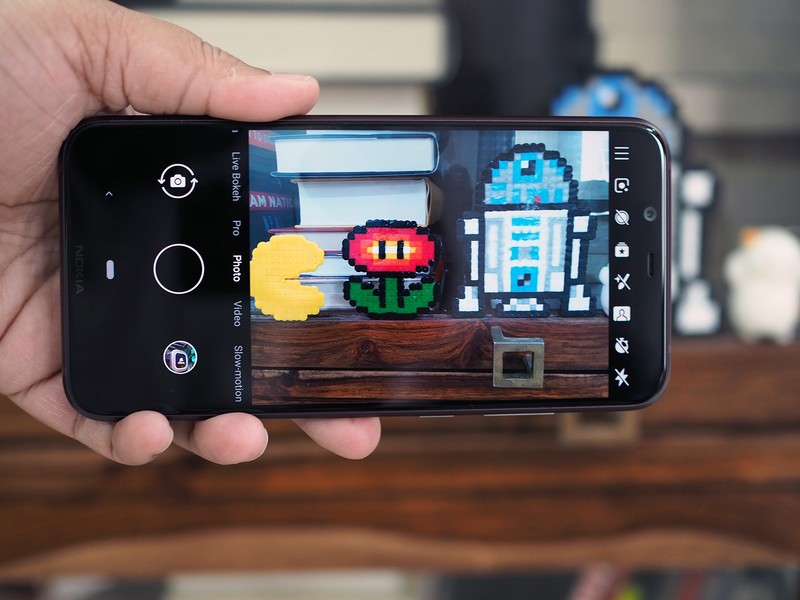
HMD has retained the same 12MP + 13MP camera configuration as the Nokia 7 Plus, but with a few key changes. The main camera now offers OIS, and the secondary sensor offers depth information for portrait shots. The changes when combined with the Spectra 250 lead to much better photos in low-light shooting scenarios.
There's a new camera interface that lists all shooting modes in a ribbon above the shutter button. The pro mode lets you adjust the white balance, shutter speed, exposure, and focus mode, and HMD has retained it Bothie feature that lets you take photos from both the front and back cameras simultaneously.
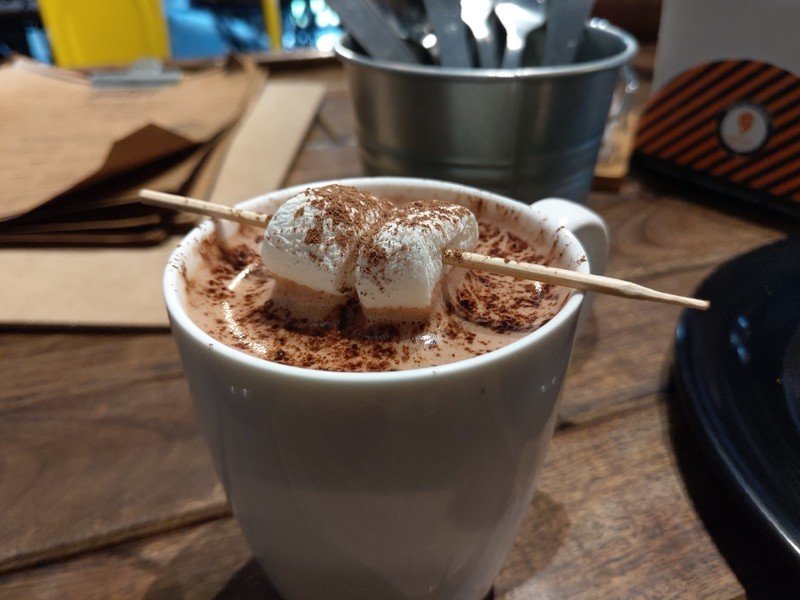
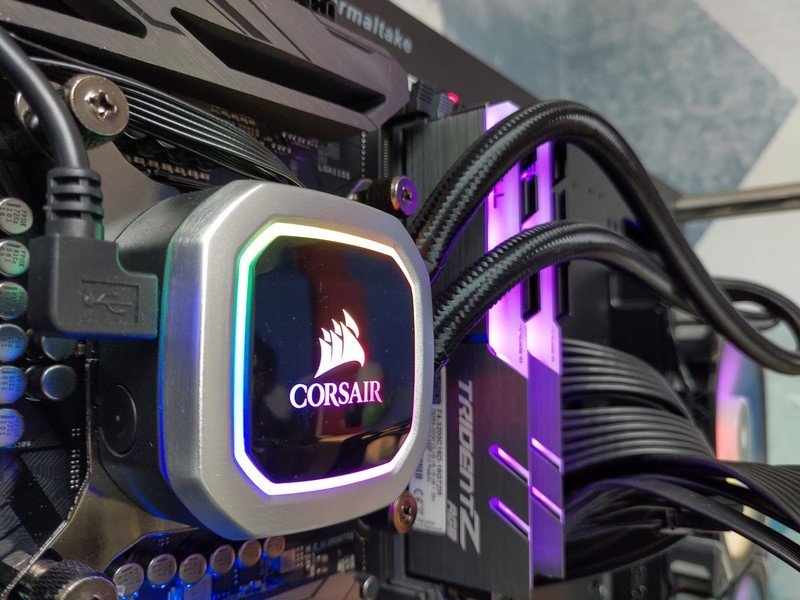
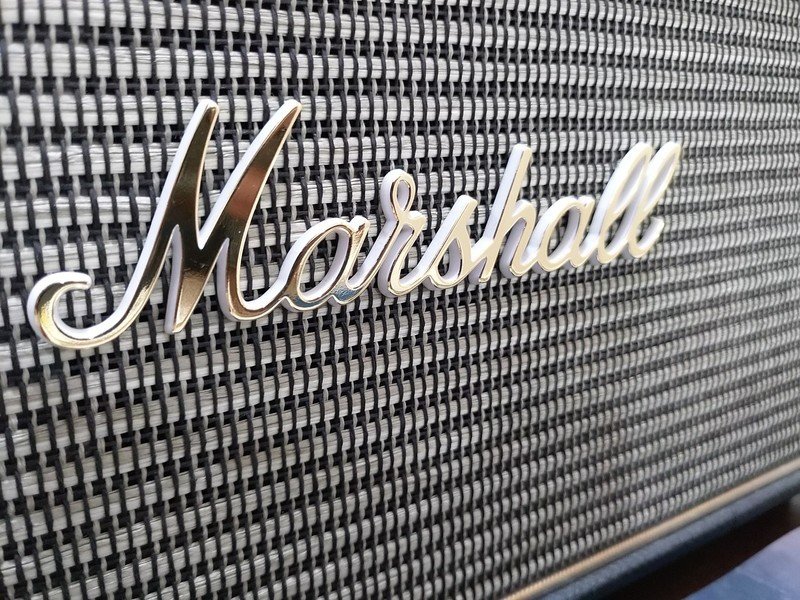

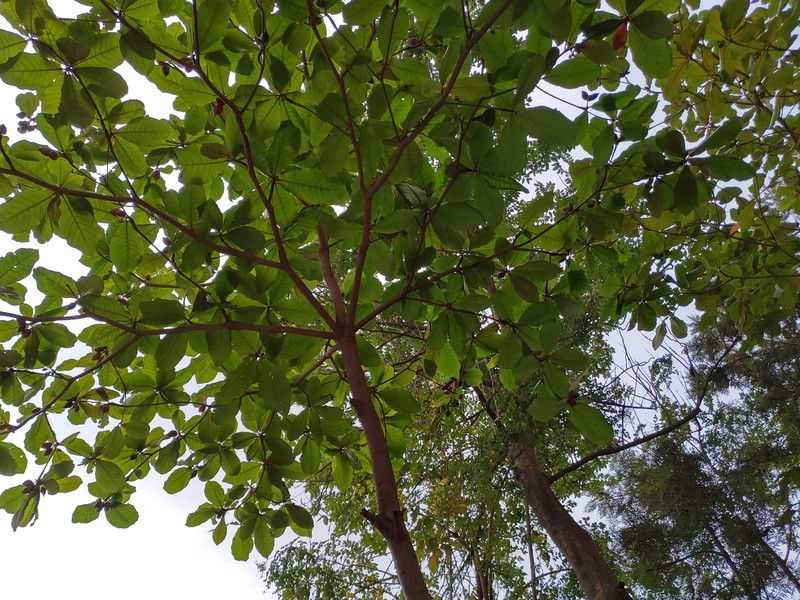
The Nokia 8.1 takes great photos in daylight scenarios, and it manages to do a decent job in low-light conditions as well. With the secondary sensor now solely focused on providing depth information, the phone takes great portrait shots.
Nokia 8.1 Bottom line
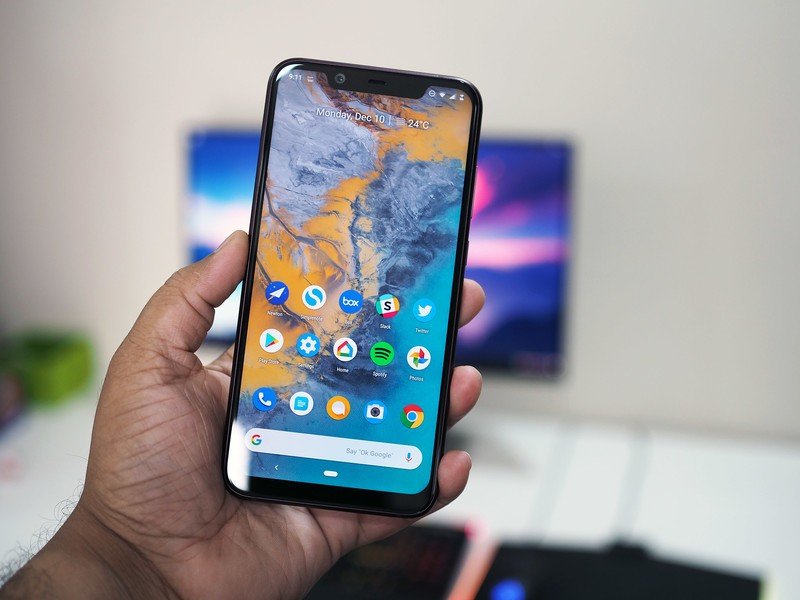
The ₹20,000 ($280) to ₹30,000 ($420) segment was under-served in previous years, but with the budget segment getting crowded, manufacturers have started getting more aggressive in the mid-range category.
Because of its pricing, the Nokia 8.1 will invite comparisons with the likes of the POCO F1, Vivo V11 Pro, Honor 10, and even the ₹37,999 ($535) OnePlus 6T. What sets the Nokia 8.1 apart is its software — committing to Android One was a masterstroke from HMD, and the clean software combined with fast updates differentiates the Nokia 8.1 from the rest of the sub-₹30,000 phones.
The Nokia 8.1 delivers excellent value for your money.
The Nokia 8.1 doesn't offer some of the newer features that we've seen over the course of the year — there's no face unlock, nor do you get an in-display fingerprint sensor. That's not a bad thing at all considering the state of in-display sensors, but I would've liked to see face unlock on the device. The phone also misses out on water resistance and wireless charging, but then again, so do most of the other devices in this segment.
The elegant design coupled with the robust hardware makes the Nokia 8.1 hold its own in this category. There aren't many Android One phones in the mid-range segment, and for those looking for an cluttered software and fast updates, the Nokia 8.1 will be the default option in 2019.
The Nokia 8.1 is slated to make its way to global markets, but for now, it doesn't look like the phone will be available in the U.S. That's a real shame, because there are few $400 phones that offer quite as much value for your money as the Nokia 8.1.
4.5 out of 5
HMD has once again shown that it understands the mid-range segment, and the Nokia 8.1 is a great phone that nails the fundamentals. It is missing out on a few extra features, but at its core it is a robust device that offers excellent performance.
HMD is kicking off sales of the Nokia 8.1 in India later this month, with other markets to follow. The base variant of the device with 4GB of RAM and 64GB of storage will be available for ₹26,999 ($380).

Harish Jonnalagadda is Android Central's Senior Editor overseeing mobile coverage. In his current role, he leads the site's coverage of Chinese phone brands, networking products, and AV gear. He has been testing phones for over a decade, and has extensive experience in mobile hardware and the global semiconductor industry. Contact him on Twitter at @chunkynerd.
